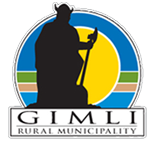The Icelandic community in North America long felt the desire to establish a truly ethnic museum to foster the heritage and the culture of its people and provide a repository for the many artifacts that would relay the story of the first settlements of their forefathers.
In 1971, the Canadian Forces Base at Gimli was withdrawn. This move was a devastating blow to the community and to compensate for the hardships created, the two senior governments granted the sum of $1.6 million to the area to create work and establish a program of rural and urban development.
Diorama of B.C. Packers Fish Packing Plant located in the Visitor Centre.
The Icelandic Cultural Corporation was incorporated in March 1972 as a non-profit organization whose first priority was to deal with the establishment of a museum.
In 1973 the Gimli Development Corporation purchased the old B.C. Packers fish packing plant and by 1974 it had been renovated to form a threefold museum, containing and Icelandic Room, a Ukrainian Room, and a Fishing Room. The museum was open for 20 consecutive summer seasons proving to be an interesting attraction for visitors and residents and providing many summer jobs for local students throughout these years.
In 1994, the Icelandic Cultural Corporation turned the operation of the museum to the Town of Gimli. Prior to handing over the keys, a professional firm from Ontairo had been retained to do a feasibility study in order to assess the best options for future development of the Museum and to explore ways in which the Museum could contribute to tourism in Gimli. In 1995 a group of concerned citizens incorporate the Icelandic International Heritage Corporation in order to ensure the continuation of a museum presence in Gimli.
While Gimli has long had a small community museum, the New Iceland Heritage Museum (NIHM) has initiated a plan to create a new museum facility.
One of the recommendaitons made in the Planning and Feasibility study completed in 1994 by Lord Cultural Resources Planning and Management Inc. was that a new museum be a major departure from the traditional concept of a small community museum. That it be developed as a national or even international museum dedicated to telling the story of New Iceland and the Icelandic experience in North America. This would attract a larger and more diverse audience while educating visitors about a very unique chapter in Canada's history.
This development option was the one chosen by the Board of Directors.
